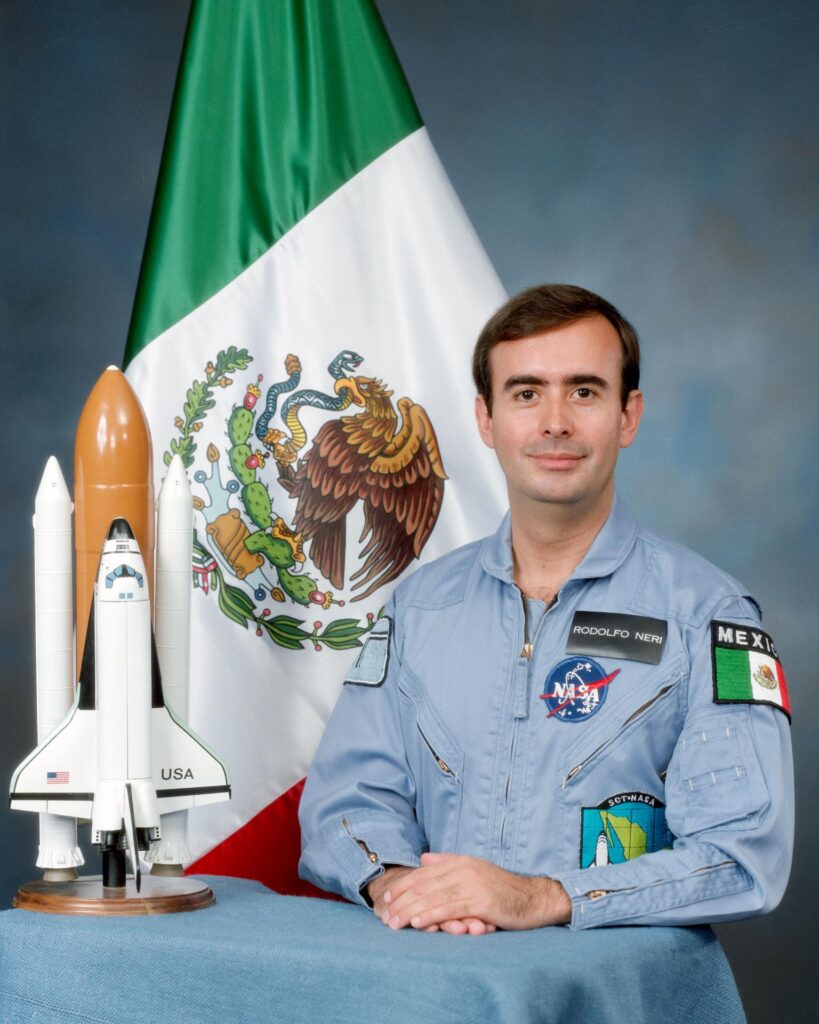Rodolfo Neri Vela was born in Chilpancingo, in the state of Guerrero, Mexico on February 19, 1952. He received a Bachelor of Science degree in Electronic/Mechanical Engineering, with specialization in communications technology, from the Universidad Nacional Autónoma de México (National University of Mexico) or UNAM. In 1976, he earned a Master of Science degree, specializing in telecommunications systems from the University of Essex, England. He received a Ph.D. in electromagnetic radiation from the University of Birmingham, England in 1979, then conducted a year of postdoctoral research in waveguides there.
Neri Vela then returned to Mexico, working as an engineer, director of projects, adviser, and Professor of Radio Communications in the Institute of Electrical Investigations, the Secretariat of Communications and Transportation, the Secretariat of the National Defense, the UNAM, and several museums of science and technology.
Dr. Vela became Mexico’s first astronaut, as a mission specialist for the joint NASA/European Space Agency mission STS-61B on November 27, 1985. He spent 165 hours in outer space aboard the Space Shuttle Atlantis, helping to place in orbit the Mexican satellite Morelos 2. STS-61B launched at night from Kennedy Space Center, Florida, and returned to land at Edwards Air Force Base, California on December 3. During the mission, Vela also conducted several experiments for the Mexican Government and tested the Orbiter Experiments Digital Autopilot. On this flight, Dr. Neri Vela traveled 2.4 million miles in 108 Earth orbits and logged 6.88 days in space.
From 1989 to 1990, Neri Vela helped plan a portion of the International Space Station for the European Space Agency while working in Holland. Dr. Neri Vela has since worked at the Institute of Electrical Research, Mexico, in the Radiocommunications Group, doing research and system planning on antennas and satellite communications systems. He has also been Head of the Department of Planning and Engineering of the Morelos Satellite Program at the Mexican Ministry of Communications and Transportation and is now a Professor in the Faculty of Engineering of the UNAM. He is a lecturer and instructor of courses on satellites, and astronautics in various institutions of higher education in different parts of the world, and has participated in many national and international congresses.
Neri Vela has published many articles and books. The latter include Satélites de Comunicaciones (Communications Satellites), Estaciones Espaciales Habitadas (Inhabited Space Stations), El Universo del Hombre y su Sistema Solar (Man’s Universe and Solar System), and Vuelta al Mundo en Noventa Minutos (Around the World in Ninety Minutes).

